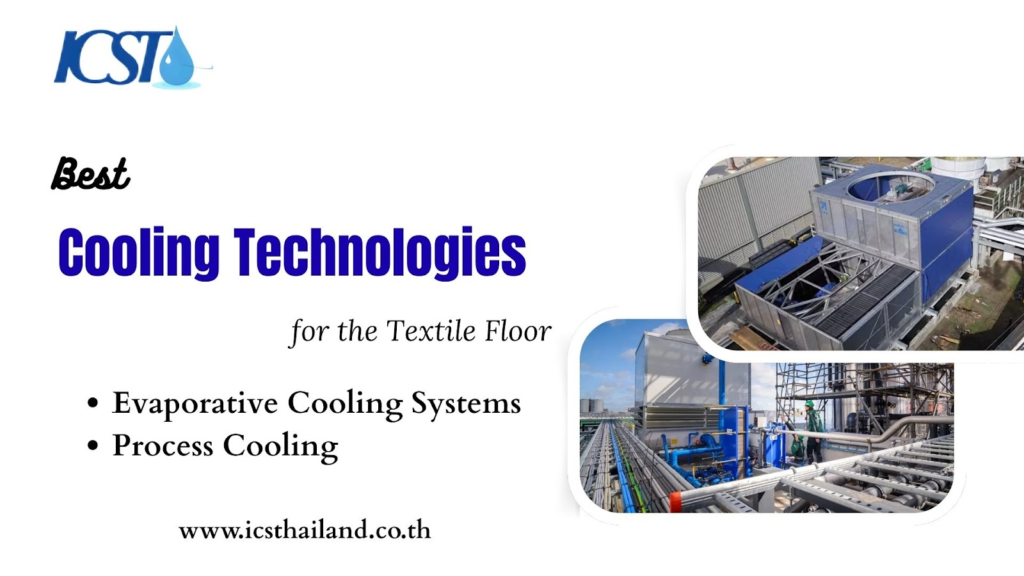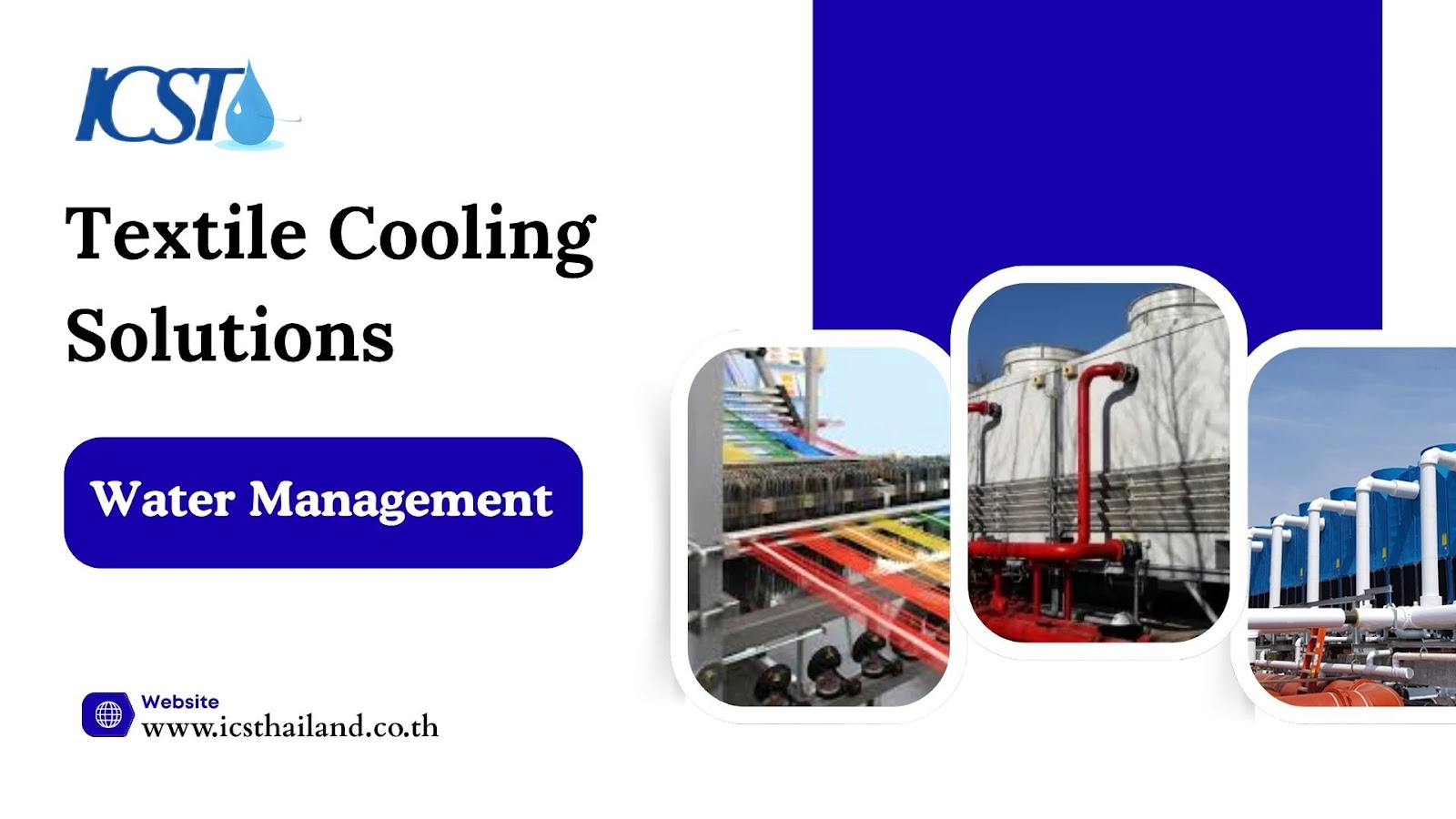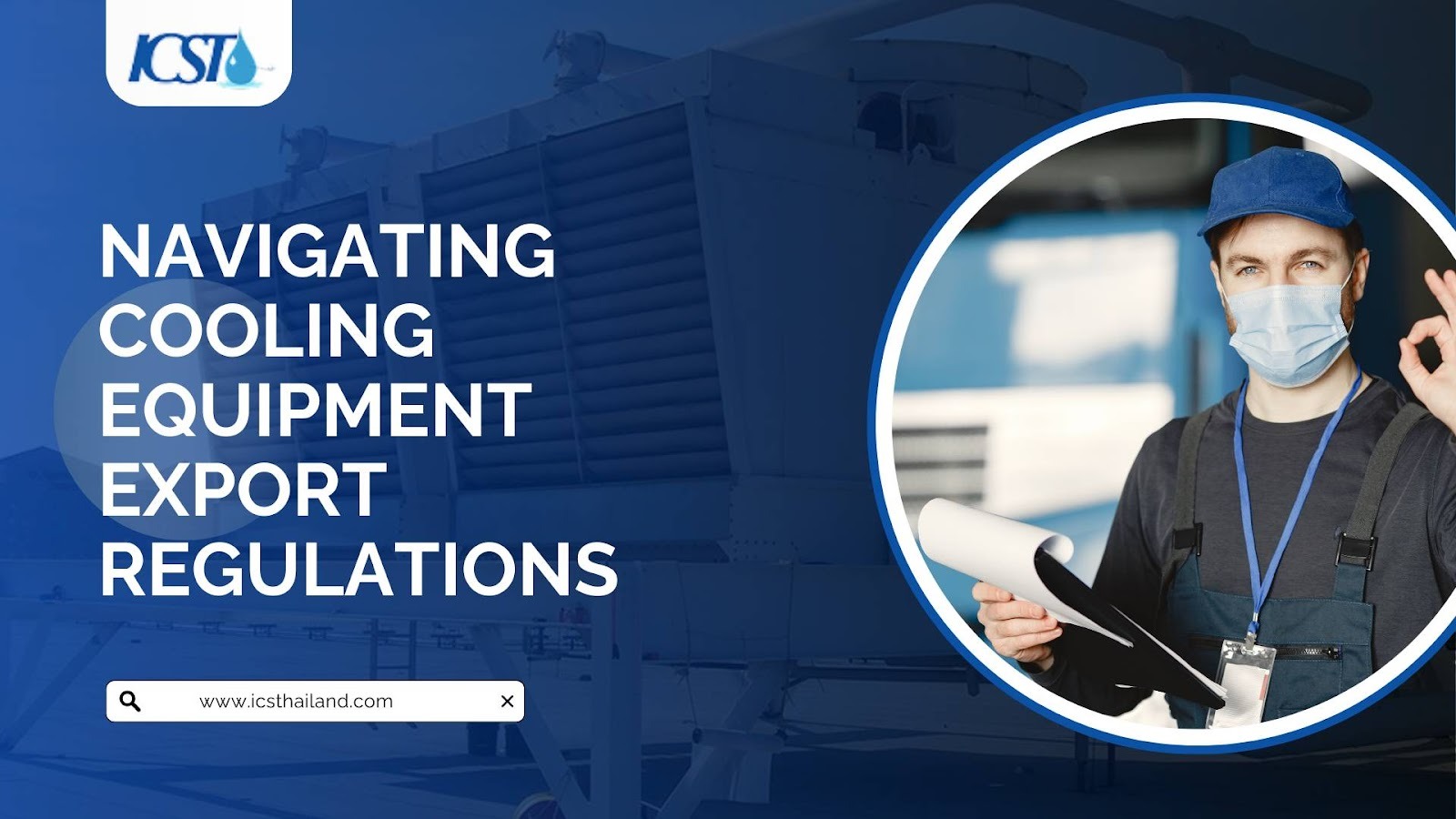Did you know that producing just one kilogram of fabric can guzzle up to 150 liters of water? And that textile production is one of the most water and energy-intensive industries globally? From dyeing and washing to cooling systems and steam generation, vast amounts of water are consumed at every stage.
Processes like jet dyeing, reaching temperatures of 130°C, demand immense heat extraction, leading to significant water usage and potential thermal pollution.
The high temperatures required in processes such as jet dyeing, which can reach up to 130°C, necessitate substantial heat extraction. This leads to significant water consumption and, if not managed properly, contributes to thermal pollution.
This guide details proven textile cooling solutions your facility can implement to slash cooling water consumption. You will learn how to increase energy recovery, reduce utility costs, and protect critical machinery from water-related defects, ultimately improving your bottom line
Table of Contents
ToggleCore Cooling Problems Hitting the Bottom Line
Inefficient cooling systems create more than just environmental concerns; they directly impact your operational profitability. What are the silent issues that could be costing you money?
A. Scaling and Corrosion
Scaling and corrosion are silent killers lurking within the heat exchangers of dyeing machines, chillers, and compressors. When mineral deposits build up or metal surfaces degrade, heat transfer efficiency plummets. This forces machinery to work harder, extending batch times and driving up energy bills.
B. Product Quality Defects
Poor water management can lead to costly product defects. Are you experiencing issues with quality control?
- Uneven Dyeing (Shade Variation): Poorly controlled or dirty cooling water can cause inconsistent temperature gradients during the cooling phase of the dyeing cycle. This temperature instability often results in noticeable shade variations, leading to product rejection and wasted resources.
- Static/Fabric Damage: Improper humidity control, often stemming from inefficient evaporative coolers, negatively affects fiber processing. This can cause issues with static electricity and even physical damage to fibers during spinning, weaving, and finishing.
C. High Utility Costs
One of the most straightforward financial drains is the direct waste of clean cooling water. Many facilities discharge this water after a single use instead of capturing and reusing it. This practice represents a missed opportunity for significant cost savings on both water and energy, highlighting the need for efficient textile cooling solutions.
Best Cooling Technologies for the Textile Floor

Effective cooling in a textile facility is divided into two main categories: facility cooling for the overall environment and process cooling for specific machinery. Understanding the difference is crucial for optimizing water and energy use.
Evaporative Cooling Systems (ECS) for Facility Air
Evaporative cooling systems are crucial for cooling the ambient air within textile plants, directly impacting worker comfort and, more importantly, controlling humidity levels.
Maintaining optimal humidity is vital for preventing issues like static buildup and fiber breakage during production, which can significantly affect product quality and operational efficiency.
- Effective blowdown procedures: To manage the cycles of concentration and prevent the buildup of dissolved solids, which can lead to scaling and reduced efficiency.
- Appropriate chemical treatments: To inhibit corrosion, scaling, and biological growth within the system.
- Regular monitoring of cycles of concentration: Ensuring efficient water usage and preventing excessive mineral deposition.
Process Cooling (Dyeing & Finishing Machines)
Process cooling focuses on extracting heat from specific machinery, primarily through heat exchangers. In textile production, water is used to rapidly cool dye liquor after the fixation stage in jet dyeing machines and to cool rollers or blankets on equipment like sanforizers.
This cooling process is critical for quality control and production speed. For instance, in jet dyeing, the rate of cooling must be precisely controlled to avoid thermal shock to synthetic fibers like polyester, which can lead to creasing or uneven dye setting.
Key considerations for process cooling water include:
- Water Quality: The water used must be free from suspended solids and minerals that could foul heat exchangers and reduce efficiency.
- Temperature Control: Precise temperature regulation is necessary to maintain consistent product quality and prevent damage to machinery.
- Flow Rate: An adequate flow rate must be maintained to ensure effective heat transfer from the equipment.
Water Management and Reuse

The single greatest opportunity for improving water efficiency lies in reusing Non-Contact Cooling Water (NCCW). This water does not come into direct contact with dyes or chemicals, making it simple to capture and repurpose.
Identify and Segregate Non-Contact Water
First, you must identify the sources of NCCW in your facility. Where is this clean water being generated?
- Sources: Common sources include air compressors, chiller condensers, heat exchangers on dyeing machines, and the cooling rolls on equipment like sanforizer blankets.
- Value: This water is clean and only moderately warm, typically between 40°C and 60°C. Its quality makes it ideal for immediate reuse in other processes, offering a dual benefit of water and energy savings.
The Closed-Loop Re-Use Strategy
Once identified, NCCW can be integrated into a closed-loop system. How can you implement this strategy?
- Capture: Direct the NCCW from its discharge point to a dedicated hot well or storage tank instead of sending it to the drain.
- Heat Recovery: Use the warm NCCW (up to 60°C) as feedwater for the boiler. Alternatively, use it for the initial water fill in a subsequent scouring or bleaching batch. This practice maximizes energy savings by utilizing the water’s existing heat.
- Process Integration: Route the recovered water for use in washing, rinsing, or other stages that require warm water, reducing the need for both fresh water and the energy to heat it.
Top 3 Advanced Techniques for Process Water
Even water that comes into direct contact with chemicals can be reused with the right Textile Cooling Solutions. What advanced methods can you employ?
Counter-Current Rinsing
This is the most popular method for reusing process water. It involves taking the least-contaminated water from the final rinse stage and reusing it in earlier washing stages, such as the next-to-last wash.
How this technique works:
- Collect water from the final rinse stage after it has been used.
- Assess the cleanliness of the collected water to ensure it is suitable for reuse.
- Use this relatively clean water in the next-to-last washing stage, where higher contamination is acceptable.
- Repeat the process, cascading water from cleaner to dirtier stages, until it is no longer usable.
- Discard or treat the used water once it reaches unacceptable contamination levels.
Dye Liquor Reuse
For dark and deep shades, reusing the spent dye bath is a highly effective and sustainable practice. This approach capitalizes on the residual color in the bath, which might be too strong for lighter shades but is perfectly suitable for subsequent dark applications.
How this technique works:
- Collect the dye liquor after the dyeing process for dark or deep shades is complete.
- Analyze the residual dye concentration and chemical composition of the collected liquor.
- Filter out any lint, fabric particles, or impurities from the spent dye bath.
- Adjust the concentration by adding fresh dye, chemicals, and water to meet the specifications for the next dyeing cycle.
- Introduce the adjusted dye liquor into the dyeing machine for the next batch of fabric, ensuring consistent color matching.
Advanced Oxidation Processes (AOPs)
Deploy advanced oxidation processes such as ozonation, UV-peroxide, or Fenton reactions to break down persistent organic pollutants and recalcitrant dyes that are not easily removed by conventional methods, enabling safe and effective water recycling.
Final Thoughts
Modern textile cooling and water management are about more than just environmental compliance. They represent a direct path to greater profitability. By reducing energy consumption, lowering water bills, and minimizing product defects, you can significantly enhance your operational efficiency and strengthen your competitive advantage.
The strategies outlined here are not just theoretical; they are practical, proven methods for turning a cost center into a source of value.
Is your existing cooling system creating a quality risk or a waste problem? Contact ICST today for a comprehensive cooling water audit.
Frequently Asked Questions
What is Non-Contact Cooling Water (NCCW)?
NCCW is clean water used for heat exchange that never contacts dyes or chemicals. It can be easily captured, stored, and reused for washing, boiler feed, or preheating processes.
What are the common cooling problems in textile plants?
The main issues are scaling, corrosion, product defects, and high utility costs due to inefficient water use or poor cooling system maintenance.
What is the role of chemical treatment in cooling water management?
Chemical treatments like anti-scalants, corrosion inhibitors, and biocides keep heat exchangers clean, prevent microbial growth, and maintain efficient heat transfer.







